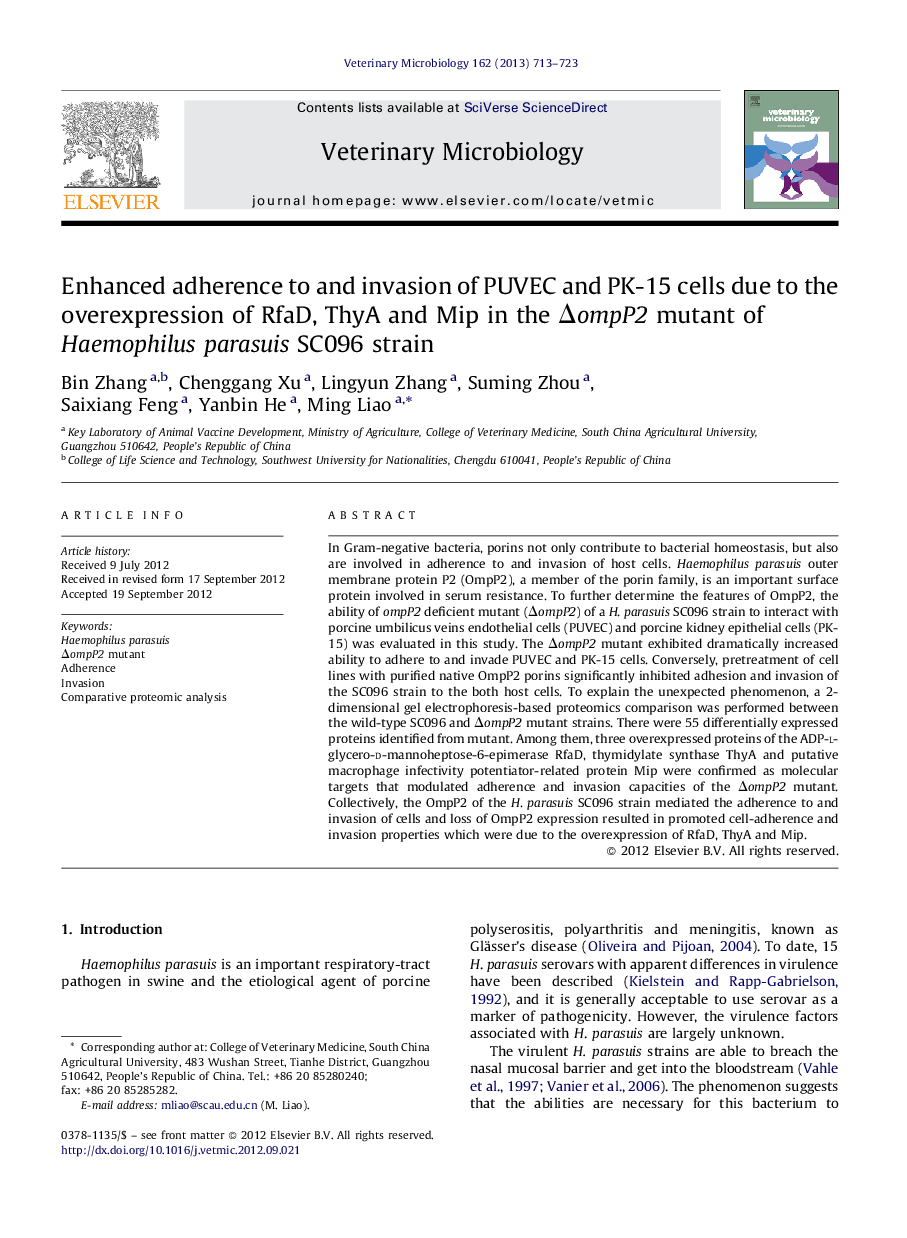| Article ID | Journal | Published Year | Pages | File Type |
|---|---|---|---|---|
| 5801053 | Veterinary Microbiology | 2013 | 11 Pages |
Abstract
In Gram-negative bacteria, porins not only contribute to bacterial homeostasis, but also are involved in adherence to and invasion of host cells. Haemophilus parasuis outer membrane protein P2 (OmpP2), a member of the porin family, is an important surface protein involved in serum resistance. To further determine the features of OmpP2, the ability of ompP2 deficient mutant (ÎompP2) of a H. parasuis SC096 strain to interact with porcine umbilicus veins endothelial cells (PUVEC) and porcine kidney epithelial cells (PK-15) was evaluated in this study. The ÎompP2 mutant exhibited dramatically increased ability to adhere to and invade PUVEC and PK-15 cells. Conversely, pretreatment of cell lines with purified native OmpP2 porins significantly inhibited adhesion and invasion of the SC096 strain to the both host cells. To explain the unexpected phenomenon, a 2-dimensional gel electrophoresis-based proteomics comparison was performed between the wild-type SC096 and ÎompP2 mutant strains. There were 55 differentially expressed proteins identified from mutant. Among them, three overexpressed proteins of the ADP-l-glycero-d-mannoheptose-6-epimerase RfaD, thymidylate synthase ThyA and putative macrophage infectivity potentiator-related protein Mip were confirmed as molecular targets that modulated adherence and invasion capacities of the ÎompP2 mutant. Collectively, the OmpP2 of the H. parasuis SC096 strain mediated the adherence to and invasion of cells and loss of OmpP2 expression resulted in promoted cell-adherence and invasion properties which were due to the overexpression of RfaD, ThyA and Mip.
Related Topics
Life Sciences
Agricultural and Biological Sciences
Animal Science and Zoology
Authors
Bin Zhang, Chenggang Xu, Lingyun Zhang, Suming Zhou, Saixiang Feng, Yanbin He, Ming Liao,
